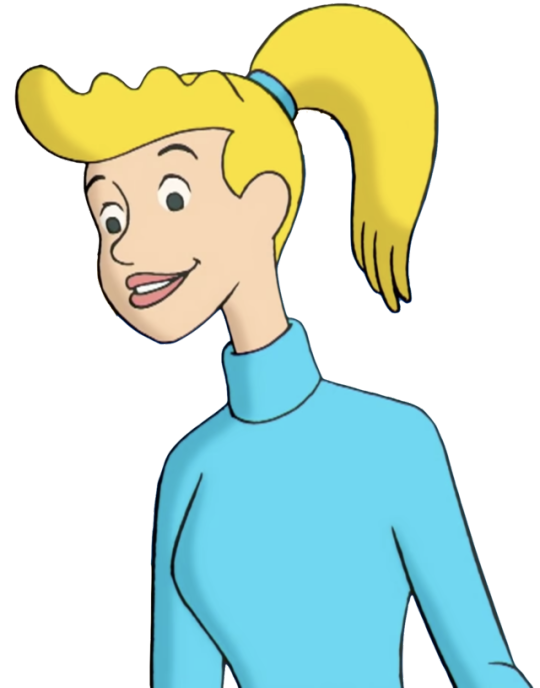#george cayley
Text
El sueño de volar
Los sueños de volar algún día se harán realidad con los vehículos aéreos eléctricos de pasajeros. Desde Ícaro desafiando al sol con alas de cera hasta los Wright elevándose sobre Kitty Hawk, la humanidad ha estado obsesionada con surcar los cielos. Ahora, disruptivas startups prometen llevar esa fantasía a nuestras ciudades con taxis aéreos autónomos. Pero mientras visionarios como Lilium y Joby Aviation buscan que despeguemos hacia los suburbios, los autos eléctricos terrestres como los de Tesla ya recorren velozmente las carreteras. ¿Podrán los vehículos voladores personales sortear obstáculos regulatorios y de infraestructura para materializar su potencial? ¿O el futuro de la movilidad eléctrica seguirá atado al asfalto? Revisemos el panorama.
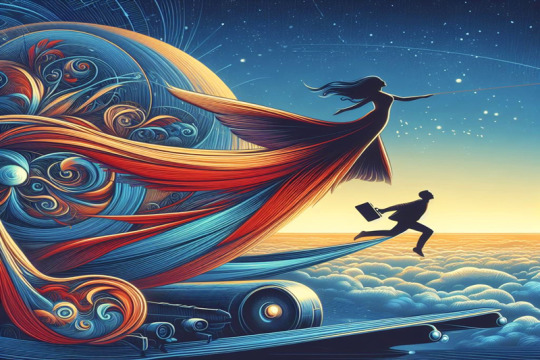
Los humanos han soñado con volar desde la antigüedad. Los primeros esfuerzos se centraron en emular el vuelo de las aves con alas artificiales. En el siglo IX, Abbas Ibn Firnas construyó unas alas rudimentarias y se lanzó desde una torre, planeando brevemente. En el Renacimiento, Leonardo Da Vinci diseñó varios prototipos de máquinas voladoras. Pero no fue hasta finales del siglo XVIII que los hermanos Montgolfier inventaron el globo aerostático, demostrando por primera vez que el vuelo era posible.
A mediados del siglo XIX, Sir George Cayley sentó las bases de la aerodinámica moderna al identificar las cuatro fuerzas que actúan sobre un avión. A principios del siglo 20, los inventores comenzaron a experimentar con autos voladores y aeronaves híbridas tierra-aire.
En 1903, los hermanos Wright lograron el primer vuelo propulsado y controlado en un avión más pesado que el aire. La Primera Guerra Mundial vio grandes avances en el diseño de aviones. En 1917, Glenn Curtiss desarrolló el Autoplane, considerado uno de los primeros diseños viables de un auto volador. En 1927, Charles Lindbergh cruzó el Atlántico en un vuelo transoceánico sin escalas.
En la década de 1930, Waldo Waterman creó varios prototipos exitosos de autos voladores que realizaron breves vuelos. Después, la Segunda Guerra Mundial trajo aviones a reacción y cohetes. Sin embargo, la tecnología y los materiales de la época limitaron el desarrollo en gran escala. La Segunda Guerra Mundial y la Guerra Fría desviaron los recursos e intereses hacia jets de combate y cohetes. No fue hasta la década de 1950 que nuevos intentos como el ConvAirCar Model 118 y el Aerocar Aero-Plane tuvieron algo de éxito, aunque eran complejos de operar. En 1969 el Apolo 11 aterrizó en la luna.
En la década de 1980, la Administración Federal de Aviación de EE. UU. estableció estándares de seguridad para vehículos de despegue y aterrizaje vertical. Esto renovó el interés y allanó el camino para desarrollos posteriores. Modelos notables de fines del siglo XX fueron el Avcen Jet Flying Car y el Moller Skycar M400. Sin embargo, los altos costos, la compleja logística y las limitaciones persistentes de almacenamiento de energía evitaron una adopción generalizada.

Ahora en las dos primeras décadas del siglo 21 hemos visto grandes avances en vehículos aéreos eléctricos para transporte urbano y regional. Compañías como Lilium, Joby Aviation y Archer Aviation están desarrollando taxis aéreos y vehículos de despegue y aterrizaje vertical eléctricos (eVTOLs) para viajes punto a punto más rápidos y sostenibles.
En 2006, el avión transitable PAL-V Liberty obtuvo la certificación de la Unión Europea para operar tanto en carreteras como en cielos. Otros como Terrafugia Transition están siguiendo un enfoque híbrido terra-aire. Mientras tanto, AeroMobil ha presentado prototipos de automóviles voladores de alta velocidad para 4 pasajeros.
China ha establecido una hoja de ruta ambiciosa para tener vehículos aéreos operativos masivamente en 2025. Compañías respaldadas como EHang ya tienen taxis aéreos autónomos funcionando en pruebas. Por otro lado, AirBus, Hyundai y Uber planean lanzar servicios aéreos urbanos en la próxima década. Con la electrificación, la autonomía y las asociaciones intersectoriales, es probable que veamos los vehículos voladores tripulados convertirse en una realidad común en los próximos años.
La compañía alemana Volocopter tiene el volador eléctrico Volocity, diseñado para trasladar 2 pasajeros sobre el entorno urbano sin necesidad de infraestructura adicional. Lilium, también alemana, trabaja en una aeronave eléctrica de despegue y aterrizaje vertical capaz de transportar a 4 pasajeros. En Estados Unidos, Joby Aviation construye el taxi aéreo eléctrico S4 con 4 plazas, ideal para entornos suburbanos.
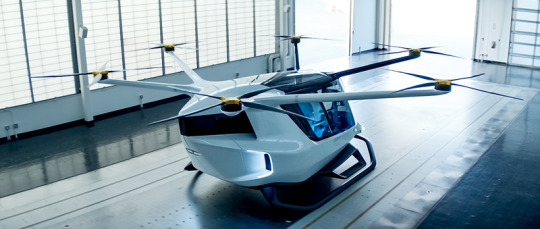
Skai Alaka'i Technologies Hopkinton, Massachusetts, USA. www.skai.co
Se pronostica que este nicho alcanzará 580 mil vehículos anuales en 2040. Empresas como Alaka'i y JetPack Aviation desarrollan prototipos de jets personales compactos impulsados por hidrógeno. La visión futura es que estos vehículos puedan estar al alcance de cualquier persona interesada en experiencias de vuelo personalizadas e innovadoras.
A pesar del entusiasmo por los vehículos aéreos eléctricos de pasajeros, su adopción masiva enfrenta desafíos. Los autos eléctricos terrestres ya tienen una infraestructura establecida de carriles, estaciones de carga y cadenas de suministro. La movilidad aérea urbana, por otro lado, debe resolver complejos rompecabezas regulatorios, de espacio aéreo, ruido y seguridad antes de materializarse.
El futuro de la movilidad aérea personalizada está despegando. Con innovadores vehículos eléctricos de despegue y aterrizaje vertical que transportan de 1 a 4 pasajeros, empresas visionarias lideran una revolución silenciosa y sostenible. Libres como pájaros, pronto cruzaremos ciudades abarrotadas pilotando nuestros propios taxis aéreos. El cielo es el límite para esta nueva era dorada de aviación personal.
¡Agárrate!
Gracias por leerme y compartir
@ptorresmx

2 notes
·
View notes
Text
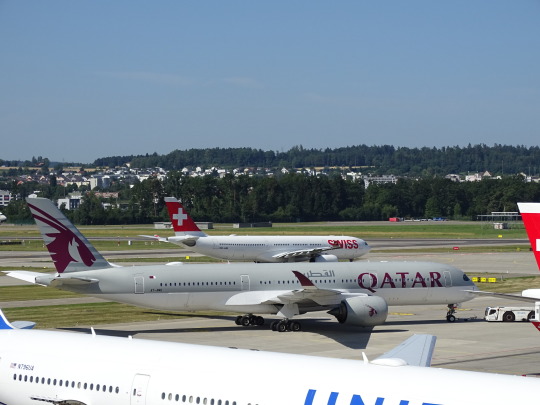

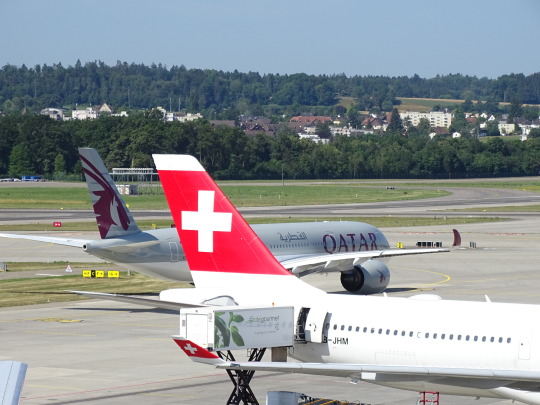
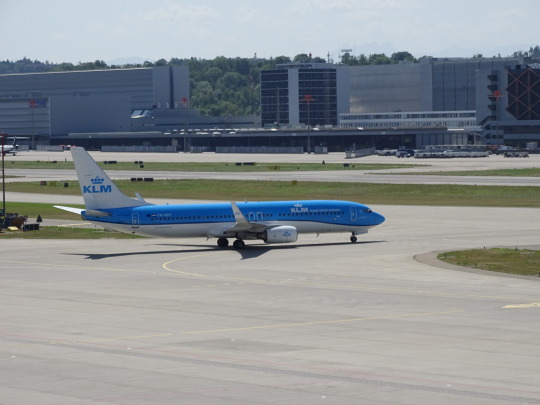

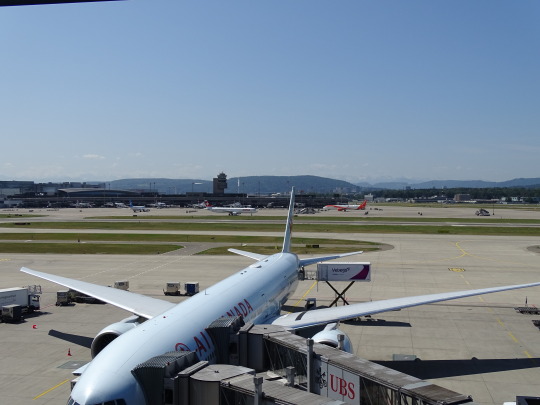


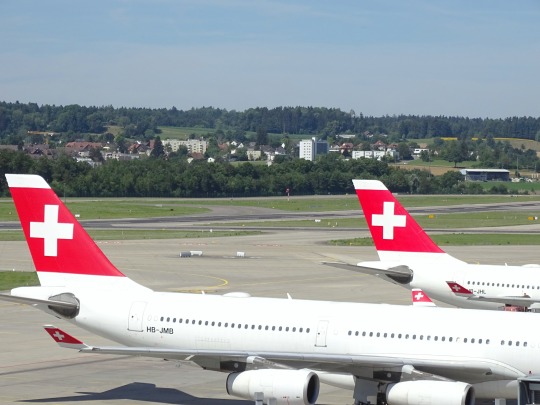
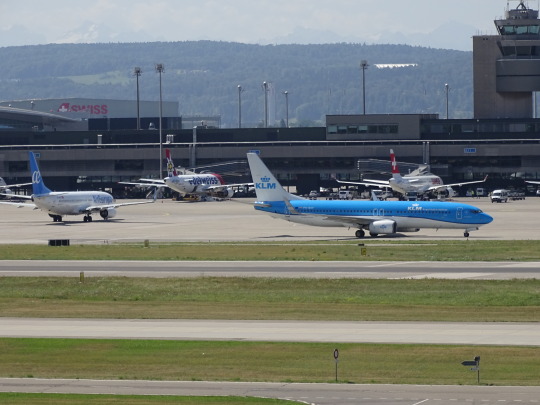

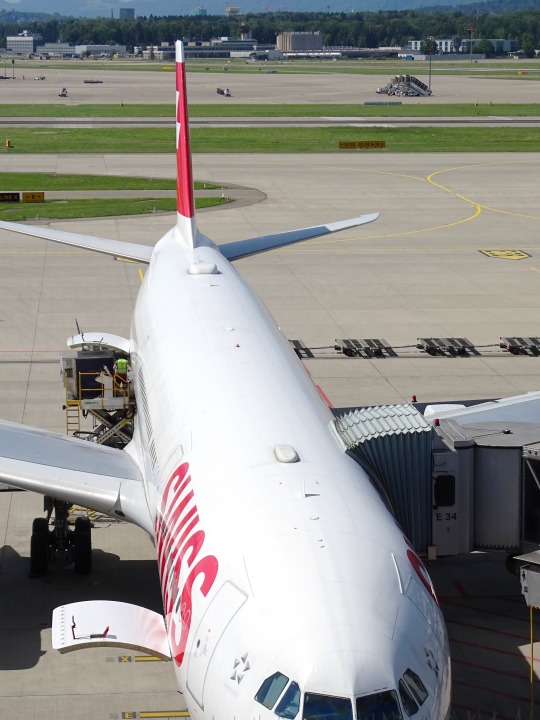

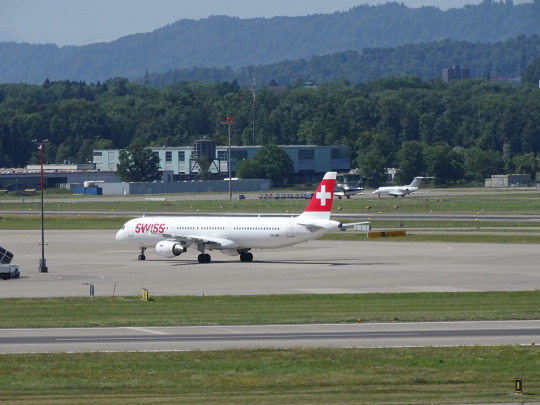
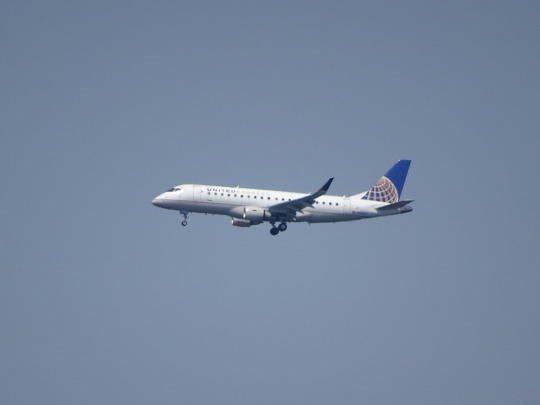
National Aviation Day
National Aviation Day on August 19 should make us stop and think about the power of flight. Yet, some scientific and technological marvels become so commonplace that we seldom take the time to re-examine their revolutionary impact with an open and inquisitive mind. In just a handful of generations, aviation went from pure, pie-in-the-sky speculation to a mundane reality that inspires about as much wonder as a trip aboard a Greyhound bus.
It’s that ho-hum attitude to the miracle of flight that makes National Aviation Day such an excellent national observation. Plus, it takes place on Orville Wright’s birthday!
Let’s take a closer look.
National Aviation Day timeline
1st Century ADChinese emperor
Legend has it that Chinese Emperor Wang Mang ordered a soldier to strap two wings to his back, who then flew 100 meters.
9th Century ADAn Andalusian takes flight
Abbas ibn Firnas is said to have covered himself with feathers, attached wings to his body and (according to Algerian historian Ahmed Mohammed al-Maqqari) "flew a considerable distance."
1799Cayley is the "father of aviation"
Sir George Cayley, an English engineer, described the model for a modern airplane — a fixed-wing machine with lift, propulsion and control mechanisms.
August 19, 1871Brother Orville is born
Orville Wright was born in Dayton, Ohio. His older brother, Wilbur, had been born in Millville, Indiana, on April 16, 1867.
December 17, 1903Orville pilots a plane
The Wright Brothers — with Orville at the helm and Wilbur making a final wing adjustment — completed the first sustained flight of a heavier-than-air aircraft on a spit of land four miles south of Kitty Hawk, North Carolina.
National Aviation Day Activities
Take a trip to North Carolina
Build your own airplane
Go "planespotting"!
What better way to commemorate the achievements of the Wright brothers than by flying to North Carolina and visiting the Wright Brothers National Memorial in Kill Devil Hills? Think of it as a pilgrimage to the spot where American flight first took off.
It doesn't have to be a real one, of course. You can build an airplane using Legos. Or, you can go for that old school-days standby — the paper plane.
Gather with a group of friends where you can watch airplanes taking off and landing. Bring food if the spirit moves you — a "planespotting" picnic!
5 High-flying Facts About Aviation
There aren't that many aviophobes
Maybe that's because so few have flown
A president flies
It started with bicycles
Who needs an engine?
Although it may seem like a lot of people are afraid to fly, aviophobia afflicts only about 6.5 percent of the population.
Worldwide, only about 5 percent of the population has been on an airplane.
The first U.S. president to fly in an airplane was the adventurous Theodore Roosevelt, who flew in a Wright Flyer on October 11, 1910.
The Wright Brothers got their mechanical training as owners of a bicycle shop.
A Boeing 747 without engine power can glide about two miles for every 1,000 feet or so that the plane is above the ground.
Why We Love National Aviation Day
We always choose the window seat
Space is the final frontier
The proclamation is simple and beautiful
Yes, some of us still stare in wonder out the plane's window as we ponder something that seems delightfully impossible. We are, after all, sitting inside a giant flying machine traveling many hundreds of miles per hour, thousands of feet above the landscape below. How can this be?
Many of the mechanical, technological and scientific breakthroughs in space travel would be unthinkable without the advancements inspired by the Wright Brothers' original experiments on a sandy strip of North Carolina coastline.
The National Aviation Day proclamation invites "the people of the United States to observe National Aviation Day with appropriate exercises to further stimulate interest in aviation in the United States." In short, it's a day to keep planes on the membrane!
Source
#National Aviation Day#NationalAviationDay#SpreadYourWings#summer 2023#2022#engineering#architecture#Schweiz#Switzerland#California#technology#Flughafen Zürich#Zurich Airport#Swiss International Air Lines#San Francisco International Airport#take-off#19 August#airplane#Zürich#original photography#vacation#travel#USA#cityscape#landmark
3 notes
·
View notes
Text
Birthdays 8.16
Beer Birthdays
Emile A.H. Seipgens (1837)
Johann Kjeldahl (1849)
Dann Paquette (1968)
John Pinkerton (1969)
Justin Dvorkin (1982)
Jacob McKean (1983)
Five Favorite Birthdays
Charles Bukowski; writer (1920)
James Cameron; Canadian film director (1954)
Steve Carell; comedian, actor (1962)
Pierre de Fermat; French mathematician (1601)
Hal Foster; Canadian-American author and illustrator (1892)
E.F. Schumacher; philosopher, economist (1911)
Famous Birthdays
Arthur Achleitner; German author (1858)
Scott Asheton; drummer (1949)
Kevin Ayers; English singer-songwriter and guitarist (1948)
Angela Bassett; actor (1958)
Bruce Beresford; Australian film director (1940)
Ivan Bilibin; Russian illustrator, artist (1876)
Gloria Blondell; actress (1910)
Ann Blyth; actress and singer (1928)
Frankie Boyle; Scottish comedian (1972)
Ida Browne; Australian geologist and palaeontologist (1900)
Arthur Cayley; English mathematician (1821)
Matt Christopher; author (1910)
Madonna Ciccone; pop singer (1958)
Mae Clarke; actress (1910)
Albert Cohen; Greek-Swiss author and playwright (1895)
Vincenzo Coronelli; Italian cosmographer and cartographer (1650)
Robert Culp; actor (1930)
Jean de La Bruyère; French philosopher (1645)
Bill Evans; jazz pianist (1929)
Suzanne Farrell; ballet dancer (1945)
Ernie Freeman; pianist and bandleader (1922)
Barbara George; R&B singer-songwriter (1942)
Hugo Gernsback; Luxembourger-American author (1884)
Frank Gifford; New York Giants QB, tv sportscaster (1930)
Anita Gillette; actor (1936)
Eydie Gorme; singer (1932)
Georgette Heyer; English author (1902)
Timothy Hutton; actor (1960)
Laura Innes; actress and director (1957)
Eddie Kirkland; singer-songwriter and guitarist (1928)
Reiner Kunze; German poet (1933)
Jules Laforgue; Uruguayan-French poet and author (1860)
Ketty Lester; singer and actress (1934)
Robert Squirrel Lester; soul singer 91942)
T. E. Lawrence; British colonel, diplomat, writer and archaeologist (1888)
Kathie Lee-Gifford; television personality (1953)
Gary Loizzo; guitarist, singer (1945)
Gabriel Lippmann; French physicist (1845)
William Keepers Maxwell, Jr.; novelist, short story writer, and essayist (1908)
George Meany; labor organizer (1894)
Pierre Méchain; French astronomer (1744) Otto Messmer; cartoonist and animator, co-created Felix the Cat (1892)
Lois Nettleton, American actres (1927)t
Julie Newmar; actor (1933)
Fess Parker; actor (1924)
Armand J. Piron; violinist, composer, and bandleader (1888)
Taylor Rain; porn actor (1981)
Billy Joe Shaver; singer-songwriter and guitarist 91939)
Bill Spooner; rock musician, singer (1949)
John Standing; English actor (1934)
Wendell Meredith Stanley; biochemist (1904)
James "J.T." Taylor; R&B singer-songwriter (1953)
Nigel Terry; British actor (1948)
Wallace Thurman; author and playwright (1902)
Mal Waldron; pianist and composer (1925)
Lesley Ann Warren; actor (1946)
Eric Weissberg; singer, banjo player, and multi-instrumentalist (1939)
1 note
·
View note
Text

https://www.flylav.com/ An airplane The Wright brothers invented and flew the first airplane in 1903, recognized as "the first sustained and controlled heavier-than-air powered flight".They built on the works of George Cayley dating from 1799, when he set forth the successful passenger-carrying gliders)and the work of German pioneer of human aviation Otto Lilientha.
0 notes
Video
youtube
Sir George Cayley (1773-1857), the Father of flight.
0 notes
Text
Helicopters

The idea of taking off vertically, making the transition to horizontal flight to the destination, and landing vertically has been for centuries the dream of inventors. It is the most logical form of flight, dispensing as it does with large landing fields located far from city centers and the inevitable intervening modes of travel automobile, subway, bus that flight in conventional aircraft usually requires.

On September 14 1939 the VS-300 the world's first practical helicopter, took flight at Stratford, Connecticut. Designed by Igor Sikorsky and built by the Vought-Sikorsky Aircraft Division of the United Aircraft Corporation the helicopter was the first to incorporate a single main rotor and tail rotor design.
The first ever idea of a helicopter was thought of in 1843 and the first scientific exposition of the principles that ultimately led to the successful helicopter from Sir George Cayley who is also regarded by many as the father of fixed-wing flight.

This is the newest army helicopter created so far as you can see that the first design of a helicopter in 1939 has developed from then at a extraordinary rate.
This helicopter is called The Bell V-280 Valor it is a tiltrotor aircraft being developed by Bell Helicopter and Lockheed Martin for the United States Army's Future Vertical Lift program.
1 note
·
View note
Photo









Leonardo da Vinci made the first real studies of flight in the 1480s. He had over 100 drawings that illustrated his theories on flight. The Ornithopter flying machine was never actually created. It was a design that Leonardo da Vinci created to show how man could fly. The modern-day helicopter is based on this concept. George Cayley worked to discover a way that man could fly. He designed many different versions of gliders that used the movements of the body to control. A young boy, whose name is not known, was the first to fly one of his gliders. The modern age of powered flight began in 1903 after Orville and Wilbur Wright made the first sustained, powered flight on December 17 in a plane. This twelve-second flight led to the development of the first practical airplane in 1905 and launched worldwide efforts to build better flying machines.
The human’s feat to flying has seen many small steps in the making. Checkout the document to view some earliest but not so successful invention patents in the development of aircrafts.
#aviation #aircrafts #historyofflying #intellectualproperty #IPR #patents #boeing #airbus #lockheedmartin #Leonardo #Bombardier #uac #ipconsulting #booleanipconsulting
0 notes
Text
Did you know...
Did you know…
Did you know…
… that today is Father of Aerodynamics Day? Sir George Cayley, English scientist and inventor, was born on December 27, 1773. As a designer of airplanes, helicopters, and gliders, he is considered the father of aerodynamics. He was also the pilot for the first manned glider flight.~~~
Today’s Inspirational Quote:
“Sometimes falling flat on your face allows you to see things from a…
View On WordPress
0 notes
Link
So like an utter fool I went looking on wikipedia for fic resources as to what kind of tech a rich nerd of the 1810s (aka Darcy) might reasonably have in possession, and came across this ABSOLUTE MADMAN who, apparently, invented a functioning, human-carrying glider that he tested successfully in 1804. What a fucking legend.
1 note
·
View note
Text






















National Aviation Day
National Aviation Day on August 19 should make us stop and think about the power of flight. Yet, some scientific and technological marvels become so commonplace that we seldom take the time to re-examine their revolutionary impact with an open and inquisitive mind. In just a handful of generations, aviation went from pure, pie-in-the-sky speculation to a mundane reality that inspires about as much wonder as a trip aboard a Greyhound bus.
It’s that ho-hum attitude to the miracle of flight that makes National Aviation Day such an excellent national observation. Plus, it takes place on Orville Wright’s birthday!
Let’s take a closer look.
National Aviation Day timeline
1st Century ADChinese emperor
Legend has it that Chinese Emperor Wang Mang ordered a soldier to strap two wings to his back, who then flew 100 meters.
9th Century ADAn Andalusian takes flight
Abbas ibn Firnas is said to have covered himself with feathers, attached wings to his body and (according to Algerian historian Ahmed Mohammed al-Maqqari) "flew a considerable distance."
1799Cayley is the "father of aviation"
Sir George Cayley, an English engineer, described the model for a modern airplane — a fixed-wing machine with lift, propulsion and control mechanisms.
August 19, 1871Brother Orville is born
Orville Wright was born in Dayton, Ohio. His older brother, Wilbur, had been born in Millville, Indiana, on April 16, 1867.
December 17, 1903Orville pilots a plane
The Wright Brothers — with Orville at the helm and Wilbur making a final wing adjustment — completed the first sustained flight of a heavier-than-air aircraft on a spit of land four miles south of Kitty Hawk, North Carolina.
National Aviation Day Activities
Take a trip to North Carolina
Build your own airplane
Go "planespotting"!
What better way to commemorate the achievements of the Wright brothers than by flying to North Carolina and visiting the Wright Brothers National Memorial in Kill Devil Hills? Think of it as a pilgrimage to the spot where American flight first took off.
It doesn't have to be a real one, of course. You can build an airplane using Legos. Or, you can go for that old school-days standby — the paper plane.
Gather with a group of friends where you can watch airplanes taking off and landing. Bring food if the spirit moves you — a "planespotting" picnic!
5 High-flying Facts About Aviation
There aren't that many aviophobes
Maybe that's because so few have flown
A president flies
It started with bicycles
Who needs an engine?
Although it may seem like a lot of people are afraid to fly, aviophobia afflicts only about 6.5 percent of the population.
Worldwide, only about 5 percent of the population has been on an airplane.
The first U.S. president to fly in an airplane was the adventurous Theodore Roosevelt, who flew in a Wright Flyer on October 11, 1910.
The Wright Brothers got their mechanical training as owners of a bicycle shop.
A Boeing 747 without engine power can glide about two miles for every 1,000 feet or so that the plane is above the ground.
Why We Love National Aviation Day
We always choose the window seat
Space is the final frontier
The proclamation is simple and beautiful
Yes, some of us still stare in wonder out the plane's window as we ponder something that seems delightfully impossible. We are, after all, sitting inside a giant flying machine traveling many hundreds of miles per hour, thousands of feet above the landscape below. How can this be?
Many of the mechanical, technological and scientific breakthroughs in space travel would be unthinkable without the advancements inspired by the Wright Brothers' original experiments on a sandy strip of North Carolina coastline.
The National Aviation Day proclamation invites "the people of the United States to observe National Aviation Day with appropriate exercises to further stimulate interest in aviation in the United States." In short, it's a day to keep planes on the membrane!
Source
#Yellowknife#Northwest Territories#summer 2024#National Aviation Day#NationalAviationDay#SpreadYourWings#summer 2023#2022#engineering#architecture#Schweiz#Switzerland#California#technology#Flughafen Zürich#Zurich Airport#Swiss International Air Lines#San Francisco International Airport#take-off#19 August#airplane#Zürich#original photography#vacation#travel#USA#cityscape#landmark#Canada
1 note
·
View note
Text
Birthdays 12.27
Beer Birthdays
Gerardus Johannes Mulder (1802)
Louis Pasteur (1822)
Rudolph Rhineboldt (1827)
John A. White (1839)
Philip Ackerman (1841)
Paul Kalmanovitz (1905)
Jean Van Roy (1967)
Rick Sellers (1977)
Five Favorite Birthdays
Maryam d'Abo; actor (1960)
Gerard Depardieu; French actor (1948)
Johannes Kepler; German astronomer (1571)
Louis Pasteur; scientist (1822)
Sarah Vowell; writer (1969)
Famous Birthdays
John Amos; actor (1939)
Jean Bartik; computer scientist and engineer (1924)
Karla Bonoff; pop singer (1951)
Terry Bozzio; rock drummer (1950)
Louis Bromfield; writer (1896)
Johannes Vodnianus Campanus; Czech poet, playwright(1572)
George Cayley; scientist, aerial navigator (1773)
Timothée Chalamet; French-American actor
Nick Chubb; football player[ (1995)
Chyna; wrestler & actress (1970)
Lily Cole; English model (1987)
Wilson Cruz; actor (1973)
Marlene Dietrich; German actor, singer (1901)
Jay Ellis; actor (1981)
Veronica Giuliani; Italian Capuchin mystic (1660)
Ian Gomez; actor (1964)
Sydney Greenstreet; actor (1879)
Hinton Helper; writer (1829)
François Hemsterhuis; Dutch philosopher (1721)
Mary Howard; English author (1907)
Mick Jones; rock guitarist (1944)
Eva LaRue; model and actress (1966)
Oscar Levant; pianist, composer (1906)
Mina Loy; British modernist poet and artist (1882)
William H. Masters; physician, sex researcher (1915)
Scotty Moore; guitarist and songwriter (1931)
Agnes Nixon; soap opera writer (1927)
Charles Olson; poet (1970)
Carson Palmer; football player (1979)
Hermann-Paul; French painter and illustrator (1864)
Mike Pinder; English rock keyboardist (1941)
Theresa Randle; actress (1964)
Cokie Roberts; television journalist (1943)
Teofil Rutka; Polish philosopher (1622)
Matt Slocum; rock guitarist (1972)
Erin E. Stead; illustrator (1982)
Willem van Otterloo; Dutch conductor and composer (1907)
Kristoffer Zegers; Dutch pianist and composer (1973)
Carl Zuckmayer; German author and playwright (1896)
0 notes
Photo






George Cayley – Scientist of the Day
George Cayley, an English engineer, died Dec. 15, 1857, at age 83.
read more...
#George Cayley#aeronautics#gliders#mechanical engineering#histsci#19th century#history of science#Ashworth#Scientist of the Day
19 notes
·
View notes
Text

https://www.flylav.com/ An airplane The Wright brothers invented and flew the first airplane in 1903, recognized as "the first sustained and controlled heavier-than-air powered flight".They built on the works of George Cayley dating from 1799, when he set forth the successful passenger-carrying gliders)and the work of German pioneer of human aviation Otto Lilientha.
0 notes
Text
Quote
in “johnny and the dead” there is a chapter where a bunch of ghosts leave their cemetery to find someone.
“Hello, directory inquiries, what name please?”
“He’s called Johnny Maxwell and he lives in Blackbury.”
“I’m afraid that is not sufficient information—”
“That’s all we—” (Listen, I can see how it works, there’s a connection—) (How many of us are there in here?) (Can I try, please?) (This is a lot better than those séances.)
The operator rubbed her headset. For some reason, her ear had gone cold.
“Ow!”
She ripped the headset off.
The operator on her right leaned over.
“What’s up, Dawn?”
“It went—it felt—”
They looked at the switchboard. Lights were coming on everywhere, and it was beginning to be covered in frost.
The point is—
—that all through history there have been people who couldn’t invent things because the rest of the world wasn’t ready. Leonardo da Vinci didn’t have the motors or materials to make his helicopter. Sir George Cayley invented the internal combustion engine before anyone else had invented gasoline.
And in his life Addison Vincent Fletcher had spent long hours with motors and relays and glowing valves and bits of wire, pursuing a dream the world didn’t even have a name for yet.
In his phone booth, dead Mr. Fletcher laughed. It had a name now. He knew exactly what a computer was when he saw one.
75 notes
·
View notes
Text
Music Headacanons - TSC gang
(There is also part 2 now)
No offense guys, but I'm tired of everyone saying "x character would be such a taylor swift fan!" Like... there are other good musicians, people 😩. The world is more than pop. So, here I made a few headacanons for random tsc characters based on their vibe (my opinion of course).
Thomas is obsessed with 20th century music, especially the 80s. Queen, George Michael, Elton John, Pink Floyd - mentioned it to him and he would know it. He has especially soft spot for George Michael.
Ty loves classical music. Especially the Russian and German classics. He's never tired of listening to Tchaikovsky and Beethoven. Kit tries to find him modern music he'd like but so far he had liked only John Legend.
Alastair is one of these people who are history buffs. When someone says "Måneskin's Beggin' is actually Madcon's from 2007!", he says "No bitches, it was The Four Season's from 1967 first" (Thomas help here)
Isabelle is a rock hardcore fan - Skillet, Panic! At The Disco, The Score, Fall out boy - she can sing half of their songs if asked to (she rarely is though BUT SHE CAN). Simon had used Imagine Dragons' I'm so sorry to apologize to her.
I feel like Grace is one of these people who's favorite musicians are unpopular or no one has heard about them. She likes more chill but meaningful music. Glass animals are her all time favorite band and she recommends it all the time. If not them, she recommends not well knows artists from youtube and tiktok, like Summer Luk, grentperez and Cayley Spivey.
Cecily is Florence + the Machine biggest fan. She discovered them through the radio while Gabriel was driving them to the hospital where Anna would be born. She made Gabriel record it and Anna was born listening to their music (and Christopher and Alexander as well). Cecily loves to tell this story, making Gabriel sigh and the kids - a little embarrassed.
Alec is one of these people who can't remember the name of bands/musicians. He knows exactly two songs of someone and listen only to them. Little Game and Rendezvous by Miss Benny? He loves them. Youngblood by 5SOS? He can sing this while sleeping. But when Magnus asks him what he thinks about Boys will be boys or Teeth he’s confused. “What?” “By Miss Benny and 5 Seconds Of Summer? You listen to them all the time.” “I have no idea who you're talking about.”
Gabriel is more of a jazz guy. As a kid his favorite show was The Pink Panther and since then he's fascinated by it. He adores Cab Calloway and through he discovers some creepy Snow White animation from 1933 and is traumatized (but Calloway is a king).
Raphael claims that any music that isn't created the 40s, the 50s or isn't Traditional Mexican music, is trash. But he secretly loves Will Jay's Never Been In Love because it's a song he relates to.
Livvy is the Little mix top fan. She follows them since X-Factor and for years dreams to meet them. For one of her birthdays Julian and Emma gives her two tickets for their concert. She doesn't know who to take with her because Ty doesn't like this sort of music and crowded places, and Dru would be really bored. In the end she goes with Kit who doesn't mind and they have a great time. In return Livvy goes with him at an Apocalyptica concert.
Jem is, obviously, into violin music. If he's honest, he’s not that much of a fan of the modern music but he likes to make/listen to violin (and piano sometimes) covers of popular songs.
Kamala is obsessed with Zendaya for years. She’s waiting for a new song until late at night, watch every film with her no matter how little role and she admits that Zendaya is her celebrity crush and should be everyone’s.
Dru knows all the popular pop songs - but as rock and metal covers. She can't stand Billie Eilish unless it's a cover by Halocene because her lyrics have such rock potential but are wasted with pop instead (she once said it to Livvy and they had a fight about it - in the end Julian said they both have a point and made them pancakes).
Kit has strange unspecified music taste. One day his favorite song is Anti-Gravity by RUNAGROUND, and the next is listening Jem playing the violin. He also can never sing on his own, his sense of rhythm is non-existing and he’s singing some random nonsense instead the actual lyric. The only song he actually knows the text of is Sweet Dreams by Eurythmics because it's one of Tessa’s favorites.
(There is also part 2 now)
#tsc#tlh#tda#tmi#tid#thomas lightwood#ty blackthorn#alastair carstairs#isabelle lightwood#grace blackthorn#cecily lightwood#cecily herondale#alec lightwood#gabriel lightwood#raphael santiago#livvy blackthorn#jem carstairs#kamala joshi#ariadne bridgestock#dru blackthorn#kit herondale#the last hours#the dark artifices#the mortal instruments#the infernal devices#tsc headcanons#the shadowhunter chronicles#my post#sav's writing#music
139 notes
·
View notes
